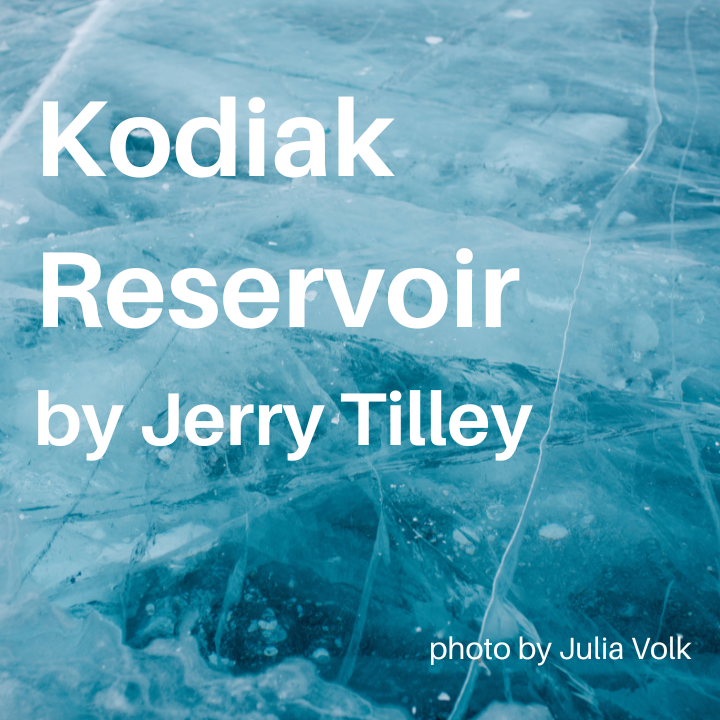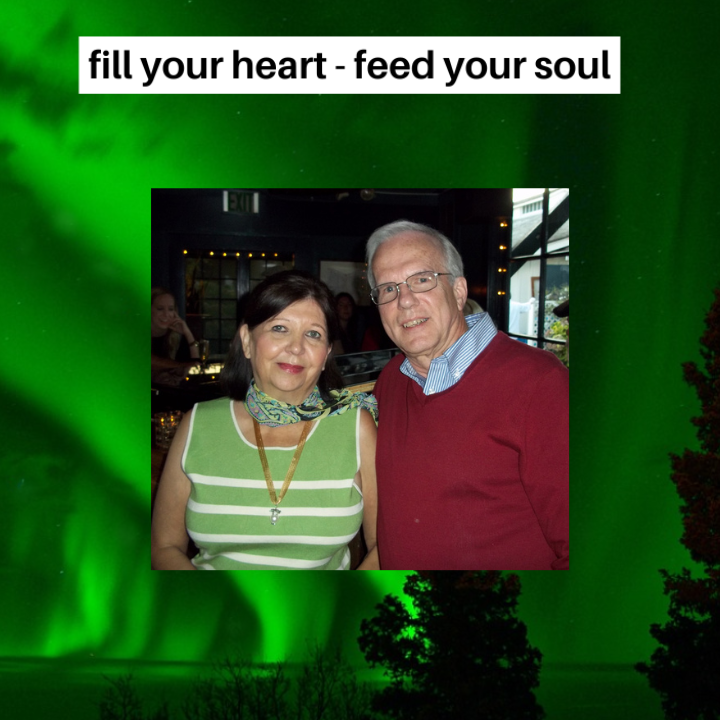Kodiak Reservoir
Kodiak Reservoir by author Jerry Tilley takes you on a dive below the ice in this Alaskan adventure.

“My hands were numb, my head ached, my suit was a sheet of ice. I checked everything twice and walked over to the hole, made sure the knot was secure, asked Skeezix to repeat what I told him, then jumped back into the icy depths of the reservoir.”
by Jerry Tilley
Kodiak, Alaska, like most Alaskan towns, gets cold in the winter. Unfortunately, winters have a habit of prolonging the anxiously awaited warmth of the spring rains. Usually, the winters are not severe like the more Northern reaches of the mainland but severe enough to freeze pipes that are left unprotected and even freeze the water supply to the town. The reservoir for the city is up the mountain behind the town. It’s close to the road to Pillar Mountain and is fed by hillside runoff and springs. The main flowing spring that feeds the reservoir is not a rushing water creek in the winter, but it does continue to feed the small inadequate reservoir.
Kodiak has several canneries that depend on the city to provide large quantities of fresh water for their processing procedures. Extended periods of freezing temperatures will cause the reservoir water level to decline. Snow in the hills is not melting, and the spring is not providing a necessary flow to maintain the water level required to keep the canneries operating.
The below-freezing temperature in this winter was established at the very start of the winter solstice.
The reservoir’s water level was getting lower and lower and the ice on the surface was getting thicker and thicker. The actual level of the water was unknown because of the layer of ice. Then the unexpected happened, the water to the city quit flowing through the 16-inch feed line from the reservoir. The ice was now over three feet thick and no way to tell why the water stopped flowing because this problem had never presented itself before this date. This town never had as many processing plants previously, so it wasn’t a problem. Now it is a huge problem. The whole town is without water.
The city’s crew sawed a big hole in the ice to see if they could determine why the water quit flowing. Looking down through 3 feet of ice could reveal nothing.
My phone rang, and I had hoped it wasn’t for a request to dive because it was too cold for anyone to be swimming even in a wetsuit. I knew the water temperature was warmer than the air but that initial moment as I submerged is a shock equal to 220 volts only, they are not warm volts. That was what I feared the most because the temperature was in the teens. Herman Buekers, Kodiak’s superintendent of the city’s maintenance division, was frantic and wanted me to dive under the ice to see if I could determine the cause of the water stoppage.
He was actually pleading not asking. Of course, being Kodiak’s only diver with compassion, experience and fearlessness, I agreed to dive through a hole in the three-foot thick ice.
I was not a novice ice diver as I had worked on the water lines under the ice at Island Lake the previous winter. On one dive, I had lost track of my entrance hole, and I was diving without a tender. This dive was against all the rules for diving, especially ice diving. My diving partner was not available, so I decided to go it alone. I had decided it would only take a few minutes to retrieve the frozen water line. I couldn’t find the entrance hole after circling for a few minutes, so I took off my air tank and used it to break through the ice. Fortunately for me the ice was only about three inches thick. I always learn the hard way.
I told Herman that it would be a while as I had to gather my gear. I would have to leave the truck running with the heater on to keep the regulators and air tanks warm.
I got into my custom-made three-eighths inch winter wetsuit and loaded all the necessary equipment in the truck. I went up the hill to the reservoir and drove out on the ice. The city crew was there and, thank goodness that included Skeezix Panamarof. Skeezix is a big guy and is about 3 feet across the shoulders and could probably lift the front end of a truck. I would feel secure with my lifeline in his hands. Unfortunately, I did not have an experienced diver tender. I managed to bring all my weight belts. I did not use a buoyancy compensator. I adjusted my buoyancy by knowing the depth of my work and using the proper weight belt accordingly.
I had an instruction period with Skeezix and Herman. With Skeezix handling the lifeline, I wanted to make certain he knew the signals, so I had him repeat them about three times. I made it simple. One pull on the tag line means haul back the slack. Two pulls for more slack and maintain tension at all times. There was no signal for stop, as I knew the water in the reservoir was only about 20 ft deep. It was so cold the water surface in the hole in the ice was starting to freeze over. I securely attached the lifeline and tied my own knot. I attached my lightweight weight belt as freshwater has less buoyancy than seawater. I put on my backpack with the air tank that I had warming in the truck with the regulator attached. I pulled my faceplate down and jumped into the ice hole. That was frigid water. I went down about fifteen feet, and the regulator froze up.
I returned to the surface, and Skeezix reached down and lifted me out of the water and stood me on the ice. My suit immediately froze the water attached to the suit. I replaced the regulator with another hot one and returned to the task at hand. I tried it again, and this time I was down but a few minutes and still had not found the problem when the regulator froze again. When the regulator freezes it remains open, and I got a mouthful of 2500 pounds of air. I returned to the ice hole and the surface once again. I think I have this figured out. When I dive, I have trained myself to breathe every thirty seconds and have been known to hold my breath up to two minutes to prolong the air in the tank. So if I breathe normally, and keep the warm air from the lungs going through the regulator, perhaps it wouldn’t freeze up. My next plunge into the depths of the reservoir was more successful. It’s rather shocking the difficulties I can overcome by using some common sense. I noticed the water level was about 4-5 inches from the bottom of the ice and little icicles were hanging down touching the water surface. There was a very light current feeding the reservoir and would not have been felt or noticed if it wasn’t for the icicles moving in the water. It was reasonably light, and the visibility was excellent. I could see clearly about 15 feet.
I found the problem as soon as I located the 16-inch pipe on the bottom that fed water to the town. There was a massive ball of ice sucked right down on top of the opening. There was no screen on the pipe. It appeared the ice ball was formed from the accumulation of small icicles attached like a snowball as the current moved it along under the ice.
When the ball of ice got big enough, it was about 2 feet in diameter, and floated over the opening of the city water feed pipe it was sucked down by the vacuum created by the water flow from the reservoir.
I dove down alongside the pipe and could see some seepage. I retrieved my knife from the sheath and poked at the ball of ice.
I made a small groove in the bottom of the ball near the pipe opening, and the suction was so powerful it was pulling mud off the bottom about 18 inches below the opening. I could hear the suction and determined that it would not be a good idea to remove that ball of ice without a plan of escape. That suction could pull me into that pipe and there was no way I would be able to pull my self free.
My regulator froze up again about that time, so I returned to the surface.
I related my findings to the city crew and told them of my plan. I told Skeezix That I wanted him to hold the line firmly in his hand, so he could feel the slightest pull. I told him that I was going to try and dislodge the ball of ice by kicking it with my heel because I thought it appeared like it may crumble with the sharp force of a high-powered kick generated from fear. I told him when I jerk that line you start hauling as hard and fast as you can because I didn’t want to end up as part of the city’s water system.
I was freezing in that wetsuit and was anxious to end this job and get home into a tub of hot water. My hands were numb, my head ached, my suit was a sheet of ice. I checked everything twice and walked over to the hole, made sure the knot was secure, asked Skeezix to repeat what I told him then jumped back into the icy depths of the reservoir. I now was positive this would work.
I descended to the pipe and the huge ice ball. I got myself situated so my head was back toward the hole, checked to ascertain the lifeline had no obstruction such as tangled around my regulator or my tool belt. I then lay down on the bottom; I raised my right flippered foot, so it was just exactly where I thought the kick would shatter the ice ball. I grabbed the lifeline with both hands. I pulled back as far as my leg would go without breaking it loose from the hip joint; I simultaneously kicked and jerked the lifeline. The ball crumbled, and I took off like I had a rocket on the other end of the lifeline. I thought Skeezix had tied one end of that line to a truck and took off. But it was just Skeezix doing exactly what I told him to do.
I looked up and saw the hole in the ice as I neared the surface at about ten knots and then Skeezix reached down, grabbed my tank valve and regulator and jerked me free of the water and stood me standing straight up on the ice. This guy is one strong individual. The kind of person you want as a friend. Not only that but he is a nice person and always friendly.
I waited around for a little while to see if the kick did the trick. Herman went downtown to wherever he could check to see if the water was flowing.
He returned with the good news that the water was once again filling the pipes of the town. I was one cold happy diver knowing I didn’t have to jump back in the ice hole. They all thought I was a hero. I just love this job.
Jerry Tilley
BONUS

Join for FREE and get Alaska Stories
from two Alaskans



